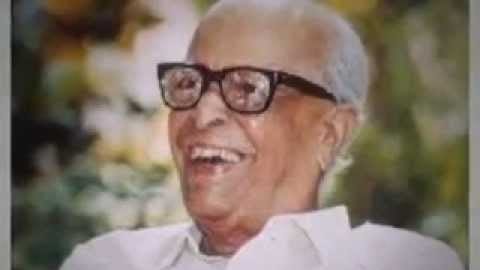New Delhi: In the 1980s and ’90s, a generation of Indian audiences would tune into Doordarshan News to catch an episode of the Hindi serial Malgudi Days — eyes glued to television screens and ears alert for the soft, simple flute sounds that prefaced every episode.
Directed by Shankar Nag and starring Girish Karnad, Arundhathi Nag, Dina Pathak and many more, the show followed the story of a young schoolboy called Swami and his adventures in the fictional South Indian town of Malgudi.
“You are exactly how I imagined Swami to be,” was a compliment that Manjunath Nayaker, that actor who played young Swami, regards as the greatest award received for his performance. It came from none other than R.K. Narayan, the man behind the bestseller Swami and Friends (1935) on which the show was based.
A collection of short stories first published in 1943 by his own publishing house, Indian Thought Publications, and then later in 1982 by Penguin Classics — Malgudi Days is widely regarded as Narayan’s magnum opus. However, it was just one of his many works that were adapted into other art forms. The Man-Eater of Malgudi (1961) and Sahitya Akademi Award winner The Guide (1958), also made it to the big screen. The latter was adapted into a film by the same name in 1965, which has become a classic and has the beautiful song Piya Tose Naina Lage Re sung by Lata Mangeshkar.
Among Narayan’s other landmark works are The Bachelor of Arts (1973), The Dark Room (1938), The English Teacher (1945) and Waiting for the Mahatma (1955) and the novella, Grandmother’s Tale (1992). In 1941, he founded his own publishing house and his works quickly found place in the bookshelves of Indian homes. At the peak of his fame, Narayan was awarded a Padma Bhushan in 1964 and 36 years later, just a year before his death at 94, a Padma Vibhushan in 2000.
Arisamala Railway Station in Shivamogga district of Karnataka, where Malgudi Days was shot, is set to be renamed as Malgudi Railway Station, and the project is being jointly funded by South-Western railways and MP B.Y. Raghavendra, the son of Karnataka Chief Minister B.S. Yediyurappa.
After being nominated to the Rajya Sabha in 1989, Narayan worked towards improving school curricula and also “campaigned for the environment, and the preservation of parks and urban open spaces”. On his birth anniversary, ThePrint flips the pages back to his life and times.
Talent came knocking early
Rasipuram Krishnaswami Iyer Narayanaswami was born into a Tamil Brahmin family on 10 October 1906 in Rasipuram, a little village in the Madras Province “famous for its ghee”, where he was raised by his maternal grandmother.
“His earliest memory was of himself sitting half-buried in sand with a peacock and a monkey for company in his grandmother’s house,” writes William Walsh. As a child, Narayan would roam nearby streets, which provided “nutrition for his imagination” and helped develop storytelling skills. His grandmother was also a major source of inspiration for the “robust, dry, temperamental old ladies” featured in his writing, adds Walsh.
Narayan had seven siblings, the cartoonist R.K. Laxman was one of them and he designed cover of Swami and Friends. Their father was a headmaster with the Government Education Service and was described by Laxman in an interview, “a cross between a Roman senator and a volcano”.
After obtaining a Bachelor of Arts degree from Maharaja College, Mysore, in 1930, Narayan followed in his father’s footsteps and became a teacher, but soon realised it was not for him. He became a full-time writer, but struggled to get his first novel, Swami and Friends, published. Desperate, he sent the manuscript to a friend in Oxford, and eventually, it landed in the lap of Graham Greene, who helped get the book published in 1935. It was Greene and publisher Hamish Hamilton who suggested the writer shorten his name to R.K. Narayan.
A year prior, the Indian writer married 15-year old Rajam Iyer and they had a daughter in March 1936. Unfortunately, Rajam died of typhoid in mid 1939, which sent Narayan into his “darkest days” and he only resumed writing much later.
‘Indianisation’ of English
Along with Mulk Raj and Raja Rao, Narayan is considered a significant contributor to the ‘Indianisation’ of English literature, which was only just blossoming at the time. Commenting on the writing form, he once said, “Indian (writings in) English is often mentioned with some amount of contempt and patronage, but is a legitimate development and needs no apology.”
Narayan’s simple, unambiguous narrative style was praised and criticised by critics across the spectrum. His focus on the middle-class was of particular interest.
“I once heard Leftish students in Madras bitterly attack Narayan for what they called — inaccurately, I think — his exclusive concern with the middle-class, a treachery, they thought, to the Indian poor and the dominantly peasant character of the country. But Narayan writes chiefly about the middle-class because he is a member of it and it is the class he understands best,” writes Walsh.
Professor G.J.V. Prasad from JNU, also defended Narayan and describing the writer’s storytelling prowess said, “He is the village gossip, your friendly uncle who always knows something or the other about everybody and, even better, tells a story in such a way that you can visualise every detail, that you recognise every character, that you hear the voices, even as you laugh at the storyteller’s comic vision. His humour does not distort reality; his irony does not lessen the truth value of his works.”
Also read: With Malgudi Days, R.K. Narayan paid a timeless ode to the common man






